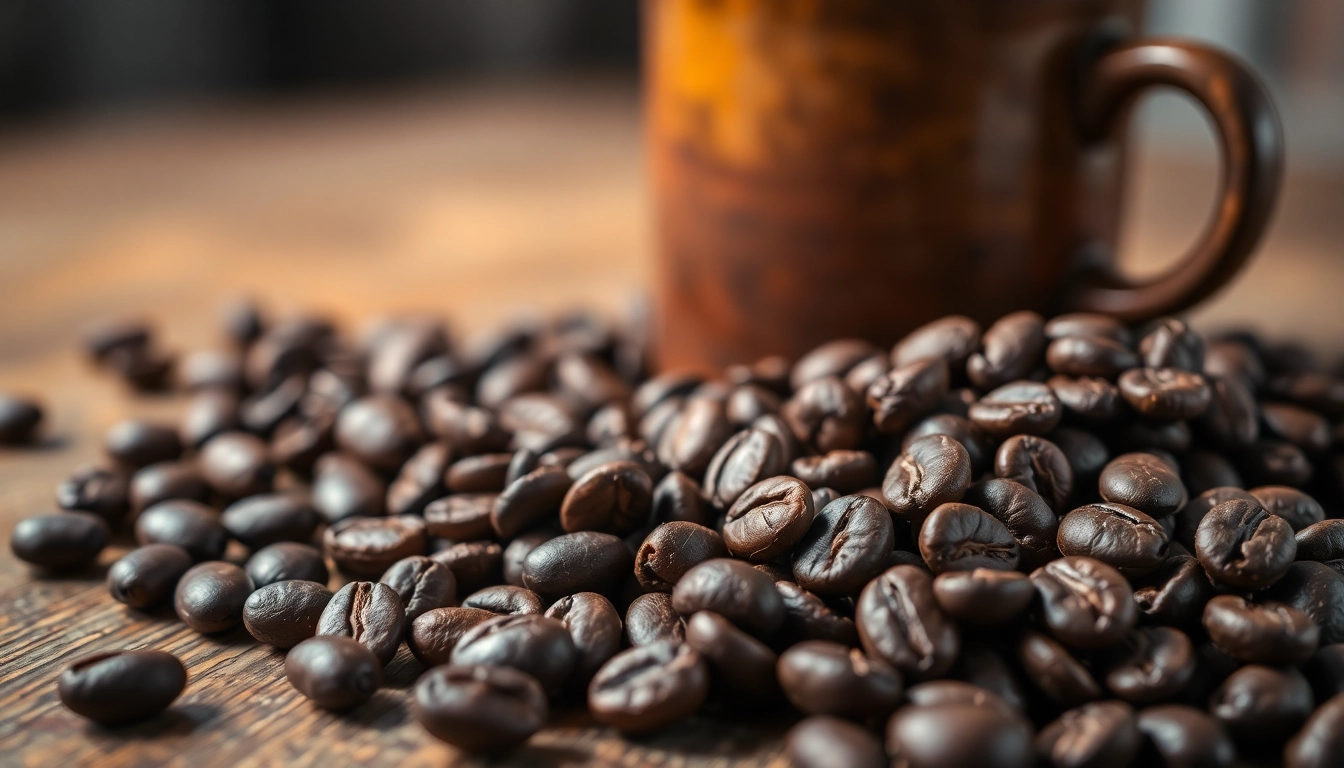Understanding Coffee Beans
Types of Coffee Beans and Their Characteristics
Coffee beans are not all created equal; they come in a variety of types, each with its own unique characteristics. The two most common types of coffee beans are Arabica and Robusta. Arabica beans are known for their sweet, soft taste and higher acidity, making them a popular choice for specialty coffees. They thrive in higher altitudes with cooler climates, generally requiring more care during cultivation. On the other hand, Robusta beans have a stronger, bolder flavor profile with a nutty or chocolatey essence and are more bitter than Arabica. They are hardier and can be grown at lower altitudes and in harsher climates, which contributes to their lower price point.
There are also other less common coffee bean varieties, including Liberica and Excelsa, which are celebrated for their unique flavors and aromas. Liberica beans are known for their distinct floral and fruity notes, while Excelsa beans offer a tart, fruity profile that stands out in blends. Understanding these differences can greatly influence your selection when considering coffee beans for brewing.
The Coffee Bean Journey: From Farm to Cup
The journey of coffee beans from farm to cup is a fascinating process that involves numerous steps to ensure quality and flavor. It begins with the cultivation of coffee plants, which can take several years before they start bearing fruit. Coffee cherries are harvested, usually by hand, to ensure that only ripe cherries are picked, as unripe cherries can negatively affect the flavor of the final brew.
Once harvested, the cherries undergo processing, usually through washed or natural methods. The washed method involves removing the fruity outer layer before the beans are dried, while the natural method lets the cherries dry on the tree, imparting unique flavors to the beans. After processing, beans are then hulled, sorted, and graded based on size, weight, and quality before being roasted. The roasting process itself is an art form, as it is here that the inherent flavors of the beans are developed and enhanced, ultimately determining how the coffee tastes in your cup.
Grading and Quality: What Makes Coffee Beans Stand Out?
The grading of coffee beans is critical in determining their quality and market value. Coffees are graded based on factors like size, density, and the presence of defects. Specialty coffee is typically graded at 80 points or higher on a 100-point scale established by the Specialty Coffee Association. Factors influencing this scoring include acidity, flavor, aroma, and aftertaste.
Understanding these grading systems can help consumers make informed decisions when purchasing coffee beans. Beans that are labeled as ‘specialty’ often come from specific regions with ideal growing conditions and are meticulously tended to ensure premium quality enjoyment.
Choosing the Right Coffee Beans
How to Select Coffee Beans for Your Brewing Style
Selecting the right coffee beans is essential for achieving your desired flavor in the final brew. Different brewing methods pair well with specific types of beans. For instance, if you prefer espresso or a French press, a medium roast coffee bean with a rich flavor profile will complement the brewing method. Conversely, lighter roasts may work better for pour-over or cold brews, enhancing the subtle flavor notes that can often be lost in more aggressive brewing techniques.
It is also important to consider your taste preferences. Do you favor a bright acidity, rich chocolatey flavors, or fruity notes? Once you establish your overall palate, you can begin narrowing down your options based on roast, origin, and type of coffee bean.
Popular Coffee Bean Varieties and Their Flavor Profiles
Several popular coffee bean varieties have gained a reputation for their unique flavor profiles. For instance, Ethiopian Yirgacheffe beans are well-known for their bright acidity and floral notes, often featuring hints of lemon and berry. Colombian coffee, revered for its well-balanced, full-bodied nature, exhibits a smooth flavor with mild acidity. On the other hand, Sumatra Mandheling offers earthy, full-bodied notes with a hint of spices and chocolate, making it a favorite among darker roast enthusiasts.
Understanding these flavor profiles not only enhances your coffee experience but also allows you to make informed choices when exploring specialty coffee beans.
Evaluating Freshness: Tips for Identifying Quality Coffee Beans
Freshness is a crucial factor affecting the flavor and aroma of coffee beans. Ideally, coffee beans should be consumed within a month of their roast date, as they start to lose their flavor as they age. When evaluating fresh coffee, look for whole beans rather than pre-ground options, as grinding accelerates oxidation, leading to flavor degradation.
Another tip is to check the packaging—coffee should be stored in airtight containers away from sunlight and moisture. You might also look for a one-way valve on coffee bags, which allows gases to escape while preventing air from entering, thereby preserving freshness.
Brewing Techniques for Optimal Flavor
Different Brewing Methods: Matching Techniques with Coffee Beans
Choosing the right brewing method can make all the difference in flavor extraction from your chosen coffee beans. Each brewing technique has its own specifications regarding water temperature, extraction time, and grind size. For example, a French press requires a coarse grind and a steeping time of about four minutes, resulting in a rich, full-bodied cup. In contrast, a pour-over, like the Chemex or V60, benefits from a medium grind and relatively quick extraction, yielding a light, clean cup with pronounced acidity.
Understanding the relationship between brewing technique and coffee bean characteristics will guide you to brew methods that best enhance your coffee’s natural flavors, ensuring a truly satisfying experience.
Impact of Grind Size on Flavor Extraction
The grind size of your coffee beans significantly impacts flavor extraction. Finer grinds have a larger surface area that can release flavors more quickly, which can be ideal for espresso, while coarser grinds work well for extended extraction methods like cold brew. If the grind size is too fine for a method that requires a coarser grind, the result can be an overly bitter cup due to over-extraction. Conversely, if the grind size is too coarse for methods like espresso, the coffee can taste weak and under-extracted.
Experimenting with grind sizes and their impact on flavor will allow you to personalize your brewing experience further, ultimately leading to your perfect cup of coffee.
Adjusting Brew Ratios: Measuring Coffee Beans for the Perfect Cup
Achieving the perfect cup of coffee often boils down to the coffee-to-water ratio. While many coffee enthusiasts recommend a ratio of 1:16 (coffee to water), personal preferences can vary widely. The brew ratio can be adjusted based on how strong or mild you prefer your coffee. Using a kitchen scale can aid in more precise measurements, ensuring that the flavor remains consistent regardless of how much coffee you brew.
Moreover, experimenting with different ratios for various beans or roasts can yield pleasantly surprising results, thus enhancing your overall coffee enjoyment.
Exploring Flavor Profiles and Tasting Notes
Understanding Flavor Descriptions for Coffee Beans
Flavor descriptions used in coffee tasting can be somewhat abstract but serve as vital guides to understanding what you might expect from various coffee beans. Terms like “fruity,” “floral,” “ earthy,” or “spicy” convey specific flavor components that can help you identify what you enjoy most. A comprehensive cup tasting can help you expand your vocabulary around coffee flavors, making it easier to select beans in the future based on flavor notes and your likings.
How Origin Affects the Taste of Coffee Beans
The origin of coffee beans significantly impacts their flavor profiles due to factors like climate, soil type, and altitude. For example, Costa Rican coffee is often celebrated for its bright acidity and sweet flavors, while beans from Brazil may showcase nutty and earthy undertones due to their different growing conditions. Learning about the regions where your favorite beans originate can enrich your appreciation of coffee, as you connect flavors to their geographical roots.
Tasting Techniques: Developing Your Coffee Bean Palate
Developing your palate for coffee tasting requires some practice and patience. One effective technique is to conduct ‘cupping’ sessions, where you take notes on different beans’ aroma, flavor, acidity, body, and aftertaste. Through consistent tasting, you can train your palate to identify various flavors and nuances, enhancing your overall coffee experience.
Storing and Caring for Your Coffee Beans
The Best Practices for Coffee Bean Storage
Proper storage is key to maintaining the quality and freshness of your coffee beans. Store your beans in a cool, dark place, ideally in an airtight container. Avoid storing them in the refrigerator, as fluctuating temperatures can produce condensation, leading to staleness. Instead, a dedicated coffee canister that blocks light and air is ideal.
Preserving Freshness: Avoiding Common Mistakes
Common mistakes in coffee bean storage can accelerate freshness loss. Grinding your beans in advance, for instance, is one way to prompt faster degradation. Purchasing whole beans and grinding them just before brewing is ideal. Additionally, buying large quantities of beans may seem economical, but it can lead to waste if you cannot consume them in a reasonable timeframe.
When to Replace Coffee Beans: Signs of Deterioration
Recognizing when to replace your coffee beans is crucial for a quality brew. Stale coffee often has a flat, dull flavor, and you might notice the absence of the signature aroma that fresh beans provide. Look for signs of oiliness or uneven color, which can indicate aging. As a general rule, if your coffee beans taste flat or lack vibrancy, it’s time to consider a fresh batch.



